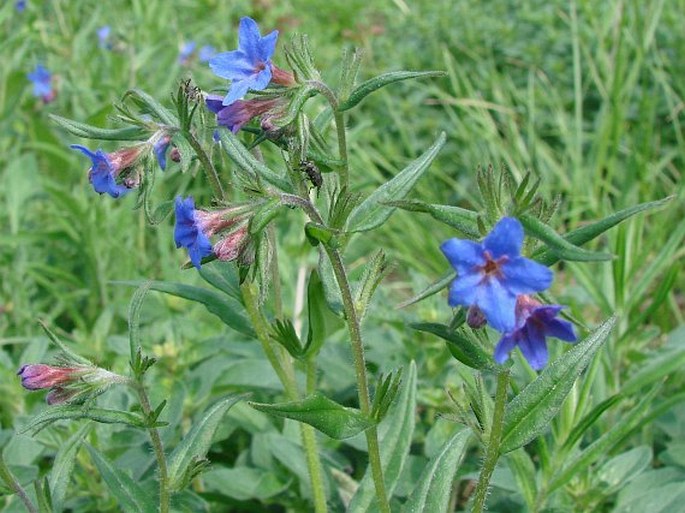Syn.: Margarospermum purpurocaeruleum (L.) Opiz, Rhytispermum purpurocaeruleum (L.) Link, Lithospermum lucanum N. Terracc., Buglossoides purpurocaerulea (L.) I. M. Johnson, Aegonychon purpurocaeruleum (L.) Holub
Family: Boraginaceae Juss.

Distributon: Southern and central Europe, from Belgium and Spain to southern part of Ukraine and Russia, Transcaucasia, Asia Minor and northern Iran.
Ecology: It grows in open forests, shrubs, forest margins and bushy slopes. It blooms from April to June.

Description: Perennial herb with rhizome. Stems 15–60(–70) cm tall, erect, unbranched, with appressed hairs below and more patent hairs above. Leaves lanceolate to narrowly elliptical, acute, 3.5–8 × 0.7–1.5 cm. Cymes 2–3, calyx 5-lobed, 6–8.5 mm long, corolla (12–)14–19 mm long, at first reddish-purple, then bright blue. Nutlets 3.5–5 × 3–3.5 mm, ovoid-globose.
Use: Sometimes grown in gardens and parks as an ornamental plant.
Note: Lithospermum purpurocaeruleum serves as host plant of longhorn beetle Opsilia molybdaena.



These images were taken in Czechia, Bohemia, Chotuc (April 30, 2011).


